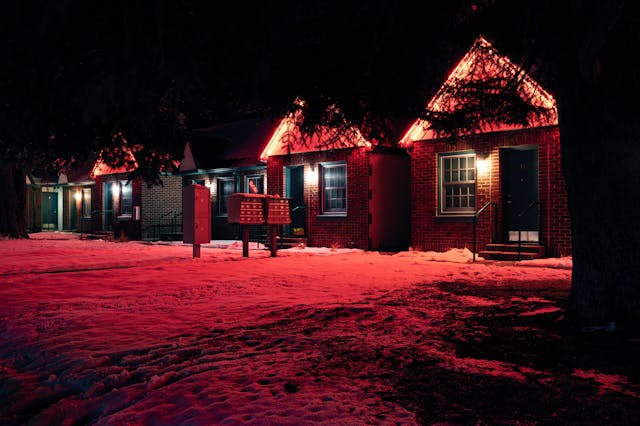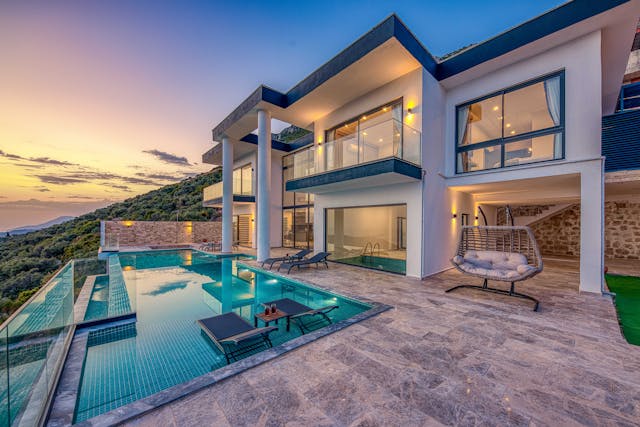Outdoor lighting has come a long way from simple bulbs and fixtures meant to illuminate driveways and patios. Today, it’s an ecosystem of smart controls, solar energy, and sensor-based systems designed for efficiency, safety, and beauty. As technology continues to merge with design, outdoor lighting is evolving into a key element of how homes, businesses, and cities function. The future is bright—literally—with lighting solutions that think, adapt, and sustain themselves.
The Shift Toward Intelligent Lighting Systems
Smart outdoor lighting represents one of the biggest shifts in how we approach illumination. Gone are the days of manually switching lights on and off or relying on timers alone. Intelligent systems now use real-time data, connectivity, and automation to deliver precision control. Users can manage brightness, color, and scheduling through smartphones or voice assistants, adjusting instantly based on mood, activity, or time of day.
In both residential and commercial settings, this interactivity enhances energy management and convenience. Businesses use smart lighting to highlight architectural features or improve nighttime security, while homeowners use it to create ambiance and increase curb appeal. The smart system learns patterns, adapting to routines and seasons to optimize comfort and savings. Lighting is no longer static—it’s responsive.
Solar Power Revolutionizing Outdoor Illumination
Solar lighting has matured from a niche concept to a central pillar of sustainable design. Modern panels are more efficient than ever, storing enough energy to power lights through multiple nights of cloud cover. With integrated lithium batteries and improved energy retention, today’s solar fixtures can perform reliably even in less sunny regions.
This shift toward solar doesn’t just save energy—it reduces infrastructure costs. In commercial environments, entire pathways, parking lots, and public spaces can be illuminated without trenching or electrical wiring. Homeowners benefit from easy installation and minimal maintenance. As governments and builders emphasize green technology, solar-powered lighting will continue to define outdoor spaces where sustainability and innovation meet.
The Rise of Sensor-Driven Intelligence
Sensors are giving outdoor lighting a new level of awareness. Motion detectors, light sensors, and even environmental monitors can now determine when, where, and how much illumination is needed. Instead of lights burning through the night, systems brighten only when activity is detected or when natural light levels drop.
This adaptive lighting not only conserves energy but also improves safety. Driveways, walkways, and public areas become illuminated the moment someone approaches, deterring trespassers while guiding residents and visitors safely. In commercial applications, sensor data can even help track usage patterns and foot traffic, providing insights that inform security and design decisions. It’s lighting that sees, thinks, and acts in real time.
Integration with Smart Homes and IoT Ecosystems
The Internet of Things (IoT) has brought a new level of connectivity to outdoor lighting. Lights now communicate with other smart devices—security cameras, thermostats, or even irrigation systems—to create a synchronized living environment. For example, when motion sensors detect movement, lights can activate while cameras record footage or alarms adjust their readiness mode.
Homeowners gain full control through mobile apps, setting scenes for gatherings, relaxation, or nighttime security with a single tap. In commercial or municipal settings, IoT integration allows remote management of hundreds of fixtures at once. Through centralized dashboards, facilities teams can monitor performance, detect outages, and schedule maintenance without stepping foot on-site. Lighting is evolving into an intelligent network, not just an accessory.
Dynamic Color and Aesthetic Design Trends
Lighting design is becoming as much about artistry as functionality. Dynamic color technology now allows fixtures to shift hues for different occasions or moods. Warm amber tones can create intimacy for a backyard dinner, while cool white light enhances visibility for security or outdoor workspaces.
Architectural lighting has become a statement piece, accentuating textures, trees, and building lines. Programmable LEDs and RGB systems make it possible to create layered effects and motion-based sequences once seen only in commercial displays. As outdoor spaces increasingly blend lifestyle and design, lighting is taking on a role that’s equal parts decorative and practical—turning every property into a living canvas of color.
The Push for Energy Efficiency and Sustainability
Energy conservation is no longer just a trend—it’s a necessity. The next generation of outdoor lighting focuses on maximizing output while minimizing energy consumption. LED technology continues to dominate, offering higher lumen-per-watt ratios and longer lifespans than traditional bulbs. Combined with solar charging and smart dimming, modern systems can cut energy use by up to 80%.

Sustainability also extends to materials and manufacturing. Recycled metals, biodegradable plastics, and modular components make fixtures easier to repair and upgrade rather than replace. Commercial projects, especially those seeking green building certifications, are now adopting lighting plans designed to minimize carbon footprint while maximizing performance and longevity.
Smart Cities and Connected Infrastructure
Outdoor lighting is at the forefront of the smart city revolution. Municipalities are replacing outdated streetlights with intelligent LED systems capable of remote monitoring and adaptive dimming. These systems not only reduce energy bills but also improve safety by adjusting brightness based on weather, traffic, or pedestrian flow.
Some cities are even embedding sensors into streetlights that collect environmental data such as air quality, temperature, and noise levels. This information helps urban planners make data-driven decisions about resource allocation and public safety. Smart street lighting is becoming the backbone of connected infrastructure, transforming ordinary illumination into a vital tool for smarter urban living.
Weather-Resistant and Durable Designs
As outdoor lighting becomes more advanced, durability remains a top priority. Smart fixtures now feature weatherproof housings, corrosion-resistant finishes, and built-in surge protection to handle harsh climates. From coastal salt air to freezing temperatures, new materials and coatings ensure longevity without compromising performance.
For commercial and industrial projects, impact-resistant designs protect against vandalism and heavy use. In residential environments, flexible mounting systems allow fixtures to adapt to evolving landscapes. The future of outdoor lighting lies not only in intelligence but also in resilience—systems that perform flawlessly through time, temperature, and terrain.
Automation and Predictive Maintenance
AI-driven analytics are giving lighting systems the ability to maintain themselves. Predictive maintenance software monitors voltage, battery levels, and component performance, flagging potential failures before they occur. For property managers and city officials, this eliminates guesswork and reduces downtime.
Automated scheduling systems also adjust illumination patterns based on seasonal changes, daylight hours, or occupancy trends. The result is a proactive approach that extends the lifespan of every fixture and ensures consistent reliability. Lighting becomes a self-optimizing system—efficient, self-monitoring, and always in sync with its surroundings.
The Intersection of Safety, Security, and Experience
Outdoor lighting’s role goes far beyond visibility. It’s becoming integral to how people feel and interact with spaces after dark. For homeowners, well-placed smart lights provide security and comfort, reducing the risk of accidents or intrusions. For businesses and communities, illuminated environments create a sense of safety and hospitality that attracts activity even at night.
AI and sensors further enhance these benefits. Motion-activated floodlights can distinguish between wildlife and human movement, reducing false alarms. In urban settings, coordinated lighting zones guide pedestrian flow and improve navigation. Light has become a tool for shaping human experience as much as it is for providing visibility.
Future Possibilities and Innovations Ahead
The next wave of outdoor lighting innovation will push beyond current imagination. Researchers are developing lights that respond to sound, temperature, and biometric cues, creating personalized illumination experiences. Solar-integrated glass panels and flexible lighting materials may soon replace traditional fixtures entirely.
As AI and renewable energy continue to evolve, outdoor lighting will serve as both function and feedback—collecting data, enhancing aesthetics, and powering sustainable lifestyles. What once lit the night will soon illuminate intelligence, turning every beam into a piece of the connected world.
Conclusion: Lighting the Way Forward
The future of outdoor lighting is bright, adaptive, and deeply intelligent. Smart controls, solar integration, and sensor technology are converging to create systems that learn, conserve, and inspire. What began as a way to simply light a path has become an extension of design, sustainability, and innovation.
Whether enhancing a backyard, illuminating a storefront, or powering a city grid, tomorrow’s lighting will do far more than shine—it will communicate, optimize, and transform. As technology continues to advance, outdoor spaces will become smarter, safer, and more beautiful, proving that the future of illumination lies not in wattage, but in wisdom.
